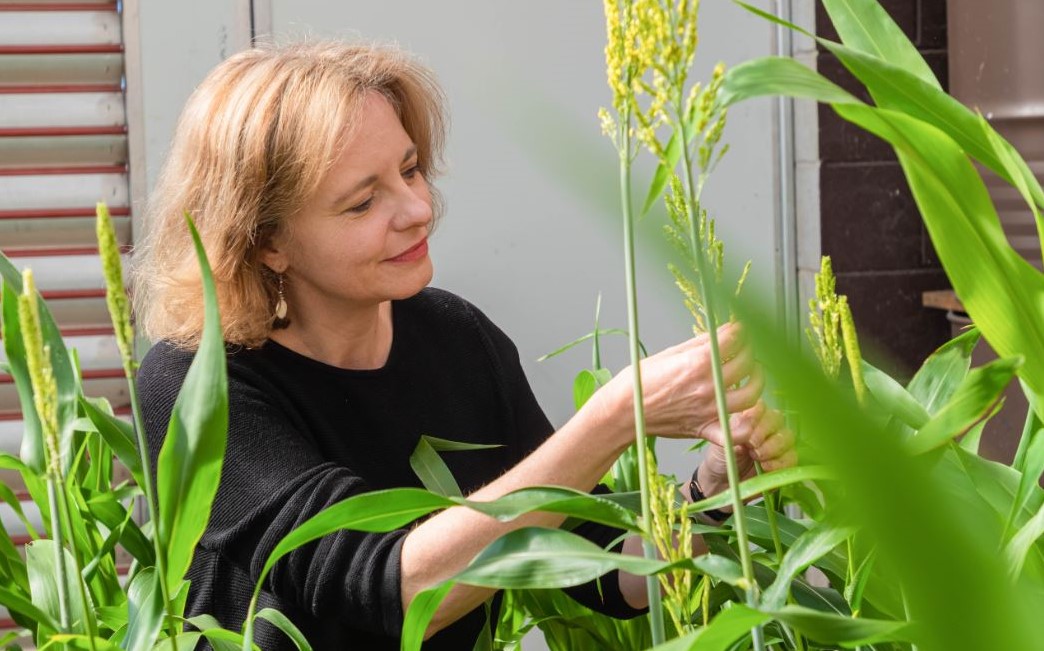World first development of a sorghum pangenome provides unprecedented insights into the genes that makes sorghum such a hardy and resilient crop.

A reservoir of genes that allowed sorghum to adapt to different environmental and disease stresses during domestication and cultivation has been identified from an analysis of 13 contrasting sorghum genomes.
The genes’ role in overcoming adverse growing conditions makes them especially valuable to breeders. Already, the new data is helping to improve yield and yield resilience of cropped varieties in Australia that face mounting production challenges, including from climate change and increased water scarcity.
The breakthrough is the result of a partnership between Australian and Chinese researchers led by Dr Emma Mace of the Queensland Alliance of Agricultural and Food Innovation (QAAFI) at the University of Queensland, together with QAAFI’s Dr Yongfu Tao – and Professor David Jordan, who heads a world-leading sorghum pre-breeding program.
Dr Mace said the ability to see this important class of ‘adaptation genes’ is a direct result of opting to analyse lines that span sorghum’s domestication history. The selected genomes were then sequenced in their entirety and compared using advanced computational methods.
“We wanted to be sure that the DNA sequencing data captured the key events that shaped the genome during domestication and subsequent cultivation,” Dr Mace said.
To that end, the 13 lines selected for sequencing included five wild relatives of cultivated sorghum, including an Australian native. All five species can be crossed to cultivated sorghum, allowing valuable genetic diversity to be readily transferred to breeding lines.
The remaining lines span four ‘racial groups’ of cultivated sorghum, with the groups representing adaptations to different growing conditions. Included are lines from Australia, Africa, Philippines and northern China.
Of the findings, Dr Tao says that the average genome was found to contain 31,000 to 36,000 genes. However, only about 70 per cent of genes are similar across all 13 genomes. These are called the ‘core’ genes. The remainder are drawn from a larger pool of ‘dispensable’ genes that vary dramatically across genomes.
“The data indicates that sorghum acquired and disposed of genes on a large scale as a result of adapting to different growing conditions,” Dr Tao said.
“Of the 44,079 gene families we catalogued from the totality of the data, 64 per cent of families include dispensable variants.”
As expected, the greatest number of unique genes was detected in the wild relatives of sorghum. However, each racial group was found to contain something novel to offer breeders. This is the genetic diversity that is strongly associated with adaptations to biotic and abiotic stresses.
“What really came across strongly from this project is that plant genomes are more dynamic than previously imagined,” Dr Mace said.
“There has been a recent evolution in thinking, away from the concept of a single reference genome per species. We now realise more valuable information is available by comparing genomes, in other words, with a ‘pan-genome approach’.”
She adds that this shift is possible due to advances in DNA sequencing technology realised during the past decade, including dramatic drops in the cost and time needed to sequence the vast amount of DNA in a genome.
Importantly, the researchers also have access to information about how the 13 selected lines perform in the paddock. That means the genetic data has correlations with trait differences, such as head shape, flowering time and grain colour.
Overall, the team believes that the new understanding creates opportunities to use genetic diversity in a new, more profound way. Rather than exploiting an individual gene variant here and there within a breeding program, the team envisions scenarios where complementary sets of genes associated with particular adaptations are exploited to drive up the hybrid vigour of cultivated varieties.
“Our approach was always practical, with the project designed to have applications in breeding that help drive gains in productivity for the grains industry,” Professor Jordan said.
Also taking part in this project is the Department of Agriculture and Fisheries in Queensland, the Chinese Academy of Sciences and BGI Genomics in Shenzhen, China.
The project was funded by the Global Crop Diversity Trust and the Australian Research Council. The findings were published in Nature Plants, 20 May 2021, in a paper entitled ‘Extensive variation within the pan-genome of cultivated and wild sorghum’.
Contact: Dr Emma Mace, Centre for Crop Science, Queensland Alliance for Agriculture and Food Innovation, The University of Queensland, E. emma.mace@uq.edu.au, T: +61 7 4542 6729, M: 0438 998 313; Dr Yongfu Tao, T: +61 7 4542 6764, E: y.tao1@uq.edu.au; Professor David Jordan, T: +61 7 4542 6722, E: david.jordan@uq.edu.au; Margaret Puls, UQ media E. m.puls@uq.edu.au, T: +61 (0)419 578 356.
Read more: https://statements.qld.gov.au/statements/92883
Images are available to download from Dropbox via this link.
The Queensland Alliance for Agriculture and Food Innovation is a research institute at The University of Queensland, established with and supported by the Queensland Department of Primary Industries.




